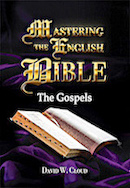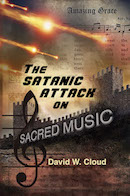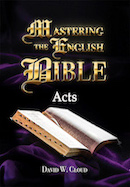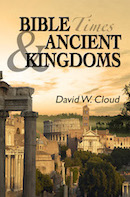866-295-4143, fbns@wayoflife.org
The following important information is from a perceptive report entitled “Carl Jung, Neo-Gnosticism, and the Meyers-Briggs Temperament Indicator (MBTI)” by Ed Hird of Canada. It is adapted from James Sundquist’s excellent book Who’s Driving the Purpose Driven Church: A Documentary on the Teachings of Rick Warren. We recommend Sundquist’s book. It will help you understand just how dangerous Rick Warren’s program is. You can also find the entire report by Hird in Sundquist’s book, of which the following is only an excerpt.
Sundquist’s books can be found HERE:
Also see the following link which has color slides to support the teaching: https://procinwarn.com/james-sundquist/
_____________
Carl Jung is described by Merill Berger, a Jungian psychologist, as “the psychologist of the 21st century” (Merill Berger and Stephen Segaller, The Wisdom of the Dreams, front cover). Dr. Satinover says, “Because of his great influence in propagating gnostic philosophy and morals in churches and synagogues, Jung deserves a closer look. The moral relativism that released upon us the sexual revolution is rooted in an outlook of which (Jung) is the most brilliant contemporary expositor” (Jeffrey Satinover, Homosexuality and the Politics of Truth, 1996, p. 238). One could say without overstatement that Carl Jung is the Father of Neo-Gnosticism and the New Age Movement. That is why Satinover comments that “one of the most powerful modern forms of Gnosticism is without question Jungian psychology, both within or without the Church” (Satinover, The Empty Self, p. 27). Carl Jung “explicitly identified depth psychology, especially his own, as heir to the apostolic tradition, especially in what he considered its superior handling of the problem of evil” (Satinover, The Empty Self, p. 238). Jung claimed that “in the ancient world, the Gnostics, whose arguments were very much influenced by psychic experience, tackled the problem of evil on a broader basis than the Church Fathers” (Carl Jung, Aion, Collected Works, Vol. 9, 2, p. 10). Dr. Satinover notes, “Whatever the system, and however the different stages are purportedly marked, the ultimate aim, the innermost circle of all Gnostic systems, is a mystical vision of the union of good and evil” (Satinover, The Empty Self, p. 23).
Jung, says Satinover, “devoted most of his adult life to a study of alchemy; he also explicated both antique hermeticism and the ‘christian’ Gnostics; his earliest writings were about spiritualism...” (Satinover, The Empty Self, p. 27, f. 28). In his autobiography Memories, Dreams, Reflections, Jung claimed: “The possibility of a comparison with alchemy, and the uninterrupted intellectual chain back to Gnosticism, gave substance to my psychology” (Jung and Aniela Jaffe, Memories, Dreams, Reflections, trans. from German by Richard & Clara Winston, p. 205). Most people are not aware that Jung collected one of the largest amassing of spiritualistic writings found on the European continent (Satinover, The Empty Self, p. 28). Dr. James Hillman, the former director for the Jungian Institute in Zurich, commented, “[Jung] wrote the first introduction to Zen Buddhism, he ... brought in (Greek Mythology), the gods and the goddesses, the myths ... he was interested in astrology...” (The Wisdom of the Dreams: Carl Jung, a Stephen Segaller Video, Vol. 3, “A World of Dreams”).
In 1929, Jung wrote a commentary on the Secret of the Golden Flower, which he said was “not only a Taoist text concerned with Chinese Yoga, but is also an alchemical treatise” (Jung, Psychology and the East, London and New York: Ark, 1978/1986, p. 3). He comments that “... it was the text of the Golden Flower that first put me on the right track. For in medieval alchemy we have the long-sought connecting link between Gnosis [i.e. of the Gnostics] and the processes of the collective unconscious that can be observed in modern man...” (Psychology and the East, p. 6). Dr. Richard Noll comments that “the divinatory methods of the I Ching, used often by Jung in the 1920s and 1930s, were a part of the initial training program of the C.G. Jung Institute of Zurich in 1948, and its use is widely advocated today in Jungian Analytic-Training Institutes throughout the world” (Richard Noll, The Jung Cult: Origins of a Charismatic Movement, 1994, p. 333).
During the hippie movement of the 1960s, the Rock Opera Hair boldly proclaimed the alleged dawning of the Age of Aquarius. Once again Carl Jung foreshadowed this emphasis in a 1940 letter to his former assistant, Godwin Baynes: “1940 is the year when we approach the meridian of the first star in Aquarius. It is the premonitory earthquake of the New Age” (Merill Berger and Stephen Segaller, The Wisdom of the Dreams, p. 162). ... In a letter written by Jung to Sigmund Freud, he said: “My evenings are taken up very largely with astrology. I made horoscopic calculations in order to find a clue to the core of psychological truth. ... I dare say that we shall one day discover in astrology a good deal of knowledge which has been intuitively projected into the heavens” (Richard Webster, Why Freud Was Wrong, 1995, p. 385).
Jung’s family had occult linkage on both sides, from his paternal grandfather’s Freemasonry involvement as Grandmaster of the Swiss Lodge (Jung and Jaffe, Memories, Dreams, Reflections, p. 232), and his maternal family’s long-term involvement with séances and ghosts. John Kerr, author of A Most Dangerous Method, comments that Jung was heavily involved for many years with his mother and two female cousins in hypnotically induced séances. Jung eventually wrote up the séances as his medical dissertation (John Kerr, A Most Dangerous Method: The Story of Jung, Freud, and Sabina Spielrein, 1993, pp. 50, 54).
Jung acquired a spirit guide and guru named “Philemon” [who was described by Jung as “an old man with the horns of a bull ... and the wings of a fisher’]. Before being Philemon, this creature appeared to Jung as “Elijah,” and then finally mutated to “Ka”, an Egyptian earth-soul that “came from below” (Satinover, The Empty Self, p. 37). (The spirit guide Philemon/Elijah later mutated into Salome, who addressed Jung in a self-directed trance vision as Christ. Jung “saw” himself assume the posture of a victim of crucifixion, with a snake coiled around him, and his face transformed into that of a lion from the Mithraic mystery religion. -- C.G. Jung, Analytical Psychology, Princeton University Press, 1989, pp. 86, 98) It may be worth reflecting upon why Jung designated his Bollingen Tower as the Shrine of Philemon (Jung and Jaffe, Memories, Dreams, Reflections, p. 223).
Carl Jung himself was the son of a Swiss Pastor caught in an intellectual faith crisis. When younger, he had a life-changing dream of a subterranean phallic god which reappeared “whenever anyone spoke too emphatically about Lord Jesus” (Memories, Dreams, Reflections, p. 12). ... This “initiation into the realm of darkness” (Memories, Dreams, Reflections, p. 15) radically shaped Jung’s approach to Jesus: “Lord Jesus never became quite real for me, never quite acceptable, never quite lovable, for again and again I would think of his underground counterpart. ... Lord Jesus seemed to me in some ways a god of death. ... Secretly, his love and kindness, which I always heard praised, appeared doubtful to me...” (Memories, Dreams, Reflections, p. 13). [Note from Brother Cloud: There are other things in this section that are even more abominable but I do not want to quote them. It is enough to say that Jung was a demonically-deceived blasphemer and Christ rejecter of the highest order.]
One of Jung’s key emphases was that the “dark side” of human nature needed to be “integrated” into a single, overarching “wholeness” in order to form a less strict and difficult definition of goodness (Satinover, Homosexuality and the Politics of Truth, p. 240). “For Jung”, says Satinover, “good and evil evolved into two equal, balanced, cosmic principles that belong together in one overarching synthesis. This relativization of good and evil by their reconciliation is the heart of the ancient doctrines of gnosticism, which also located spirituality, hence morality, within man himself. Hence ‘the union of opposites’” (Satinover, Homosexuality and the Politics of Truth, p. 240).
Jung believed that “the Christ-symbol lacks wholeness in the modern psychological sense, since it does not include the dark side of things...” (Jung, Aion, Collected Works, p. 41). For Jung, it was regrettable that Christ in his goodness lacked a shadow side, and God the Father, who is the Light, lacked darkness (John Dourley, C.G. Jung and Paul Tillich, 1981, p. 63). He spoke of “... the incompleteness of the Christian God-image” (Jung and Jaffe, Memories, Dreams, Reflections, p. 318). ... Jung believed, “It is possible for a man to attain totality, to become whole, only with the co-operation of the spirit of darkness...” (Jung, “The Phenomenology of the Spirit in Fairy Tales,” Collected Works, 9, para. 453). ....
“Jung’s direct and indirect impact on mainstream Christianity -- and thus on Western culture,” says Satinover, “has been incalculable. It is no exaggeration to say that the theological positions of most mainstream denominations in their approach to pastoral care, as well as in their doctrines and liturgy -- have become more or less identical with Jung’s psychological/symbolic theology” (Satinover, Homosexuality and the Politics of Truth, p. 240).
It is not just the more “liberal” groups, however, that are embracing the Jungian/MBTI approach. In a good number of Evangelical theological colleges, the MBTI is being imposed upon the student body as a basic course requirement, despite the official Jungian stance that “the client has the choice of taking the MBTI or not. Even subtle pressure should be avoided” (Gordon Lawrence, People Types and Tiger Stripes, p. 218). ...
Jung taught the now familiar inter-faith dialogue line that “both paths are right” (Dourley, C.G. Jung and Paul Tillich, p. 279). Jung spoke of Jesus, Mani, Buddha, and Lao-Tse as “pillars of the spirit”, saying, “I could give none preference over the other” (Dourley, p. 65). The English theologian Don Cupitt says that Jung pioneered the multi-faith approach now widespread in the church (The Wisdom of the Dream, p. 99). ...
In light of our current Canadian controversies around “Mother Goddess” hymnbooks, it is interesting to read in the MBTI source book, Psychological Types (Carl Jung, 1921), about the “Gnostic prototype, viz, Sophia, an immensely significant symbol for the Gnosis” (Jung, Psychological Types: or the Psychological of Individuation, Princeton, 1921, 1971, p. 290). Carl Jung is indeed the Grandfather of much of our current theology....
Dr. Richard Noll holds in his book The Jung Cult that such Jungian ideas as the “collective unconscious” and the theory of the archetypes come as much from late 19th century occultism, neopaganism, and social Darwinian teaching, as they do from natural science (The Jung Cult, front cover). Jung’s post-Freudian work (after 1912), especially his theories of the collective unconscious and the archetypes, could not have been constructed, says Noll, without the works of G.R.S. Mead on Gnosticism, Hermeticism, and the Mithraic Liturgy. Starting in 1911, Jung quoted Mead, a practicing Theosophist, regularly in his works through his entire life (Noll, The Jung Cult, p. 69). Richard Webster holds that “the Unconscious is not simply an occult entity for whose real existence there is no palpable evidence. It is an illusion produced by language -- a kind of intellectual hallucination” (Richard Webster, Why Freud Was Wrong, p. 250).
Jung was a master at creating obscure, scientific-sounding concepts, usually adapted from occultic literature. Jung held that “the collective unconsciousness is the sediment of all the experience of the universe of all time, and is also the image of the universe that has been in process of formation from untold ages...” (Jung, Collected Papers on Analytical Psychology, “The Psychology of Unconscious Processes,” p. 432). ...
In words strangely reminiscent of L. Ron Hubbard’s Scientology, Jung teaches in Psychological Types (1921), “The unconscious, regarded as the historical background of the psyche, contains in a concentrated form the entire succession of engrams (imprints) which from time to time have determined the psychic structure as it now exists” (Jung, Psychological Types, p. 211). ...
Jung entitled an entire section in Psychological Types -- “Concerning the Brahmanic Conception of the Reconciling Symbol.” [Note from Bro. Cloud: This, of course, is Hinduism.] Jung notes: “Brahman therefore must signify the irrational union of the opposites -- hence their final overcoming ... These quotations show that Brahman is the reconciliation and dissolution of the opposites -- hence standing beyond them as an irrational factor” (Psychological Types, pp. 245-46).
- Receive these reports by email
- www.wayoflife.org
______________________
Sharing Policy: Much of our material is available for free, such as the hundreds of articles at the Way of Life web site. Other items we sell to help fund our expensive literature and foreign church planting ministries. Way of Life's content falls into two categories: sharable and non-sharable. Things that we encourage you to share include the audio sermons, O Timothy magazine, FBIS articles, and the free eVideos and free eBooks. You are welcome to make copies of these at your own expense and share them with friends and family. You may also post parts of reports and/or entire reports to websites, blogs, etc as long as you give proper credit (citation). A link to the original report is very much appreciated as the reports are frequently updated and/or expanded. Things we do not want copied and distributed are "Store" items like the Fundamental Baptist Digital Library, print editions of our books, electronic editions of the books that we sell, the videos that we sell, etc. The items have taken years to produce at enormous expense in time and money, and we use the income from sales to help fund the ministry. We trust that your Christian honesty will preserve the integrity of this policy. "For the scripture saith, Thou shalt not muzzle the ox that treadeth out the corn. And, The labourer is worthy of his reward" (1 Timothy 5:18). Questions? support@wayoflife.org
Goal:Distributed by Way of Life Literature Inc., the Fundamental Baptist Information Service is an e-mail posting for Bible-believing Christians. Established in 1974, Way of Life Literature is a fundamental Baptist preaching and publishing ministry based in Bethel Baptist Church, London, Ontario, of which Wilbert Unger is the founding Pastor. Brother Cloud lives in South Asia where he has been a church planting missionary since 1979. Our primary goal with the FBIS is to provide material to assist preachers in the edification and protection of the churches.
Offering: Offerings are welcome if you care to make one. If you have been helped and/or blessed by our material offerings can be mailed or made online with with Visa, Mastercard, Discover, or Paypal. For information see: www.wayoflife.org/about/makeanoffering.html.





